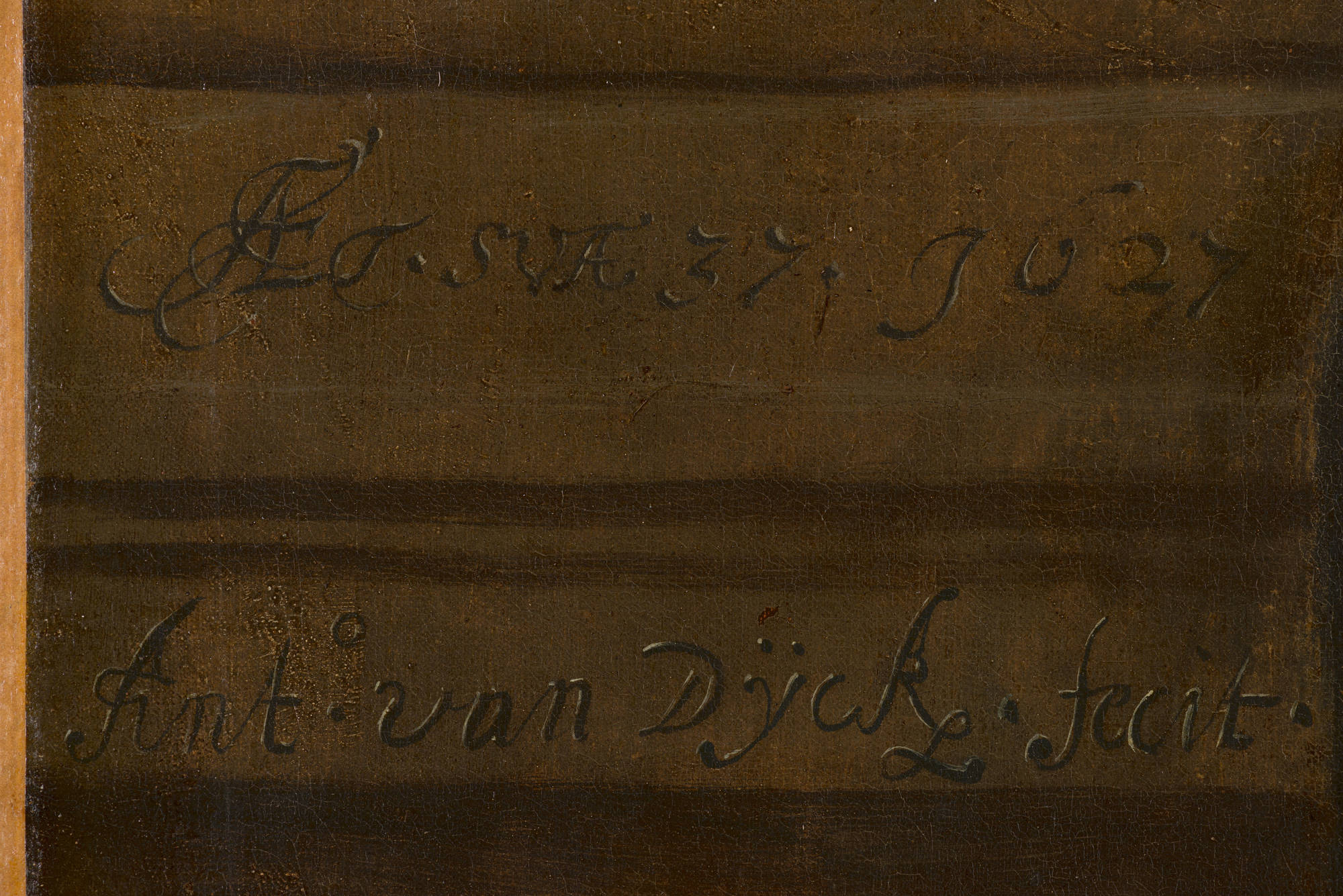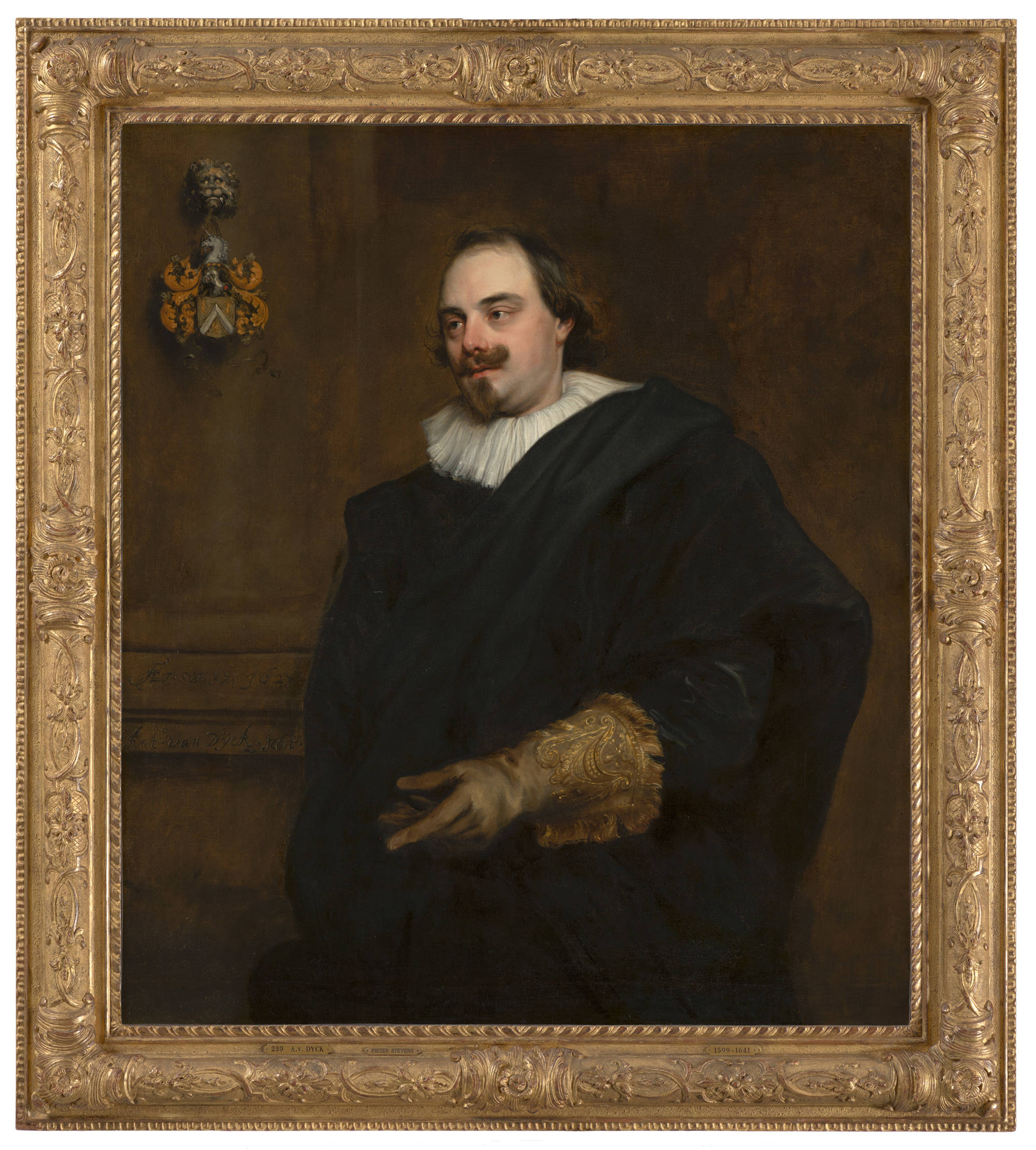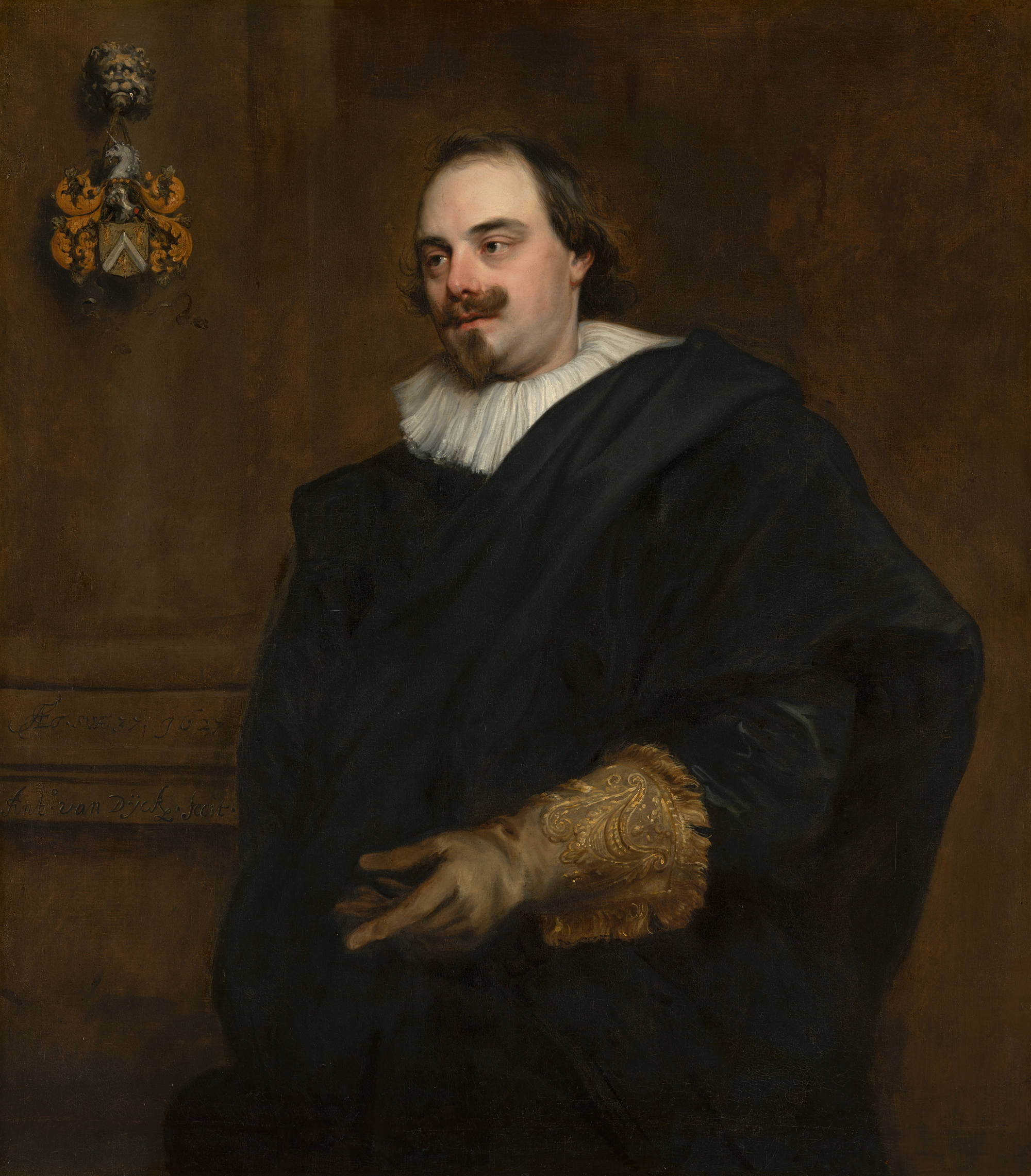The wealthy cloth merchant Peeter Stevens (c. 1590-1668) was thirty-seven years old when he had his portrait painted by Van Dyck in 1627. On 12 March 1628, Stevens married twenty-two-yearold Anna Wake (1605-before 1669), the eldest daughter of the Englishman Lionel Wake, a Catholic merchant and resident of Antwerp, who was a good friend of Rubens. The portrait of Anna Wake was most likely commissioned to mark their marriage, as the pendant to the existing portrait of her husband. The square ring on Wake’s left thumb is probably her wedding ring.
Beautifully dressed and holding a fan of black and white ostrich feathers, she turns towards her new husband as she looks at the viewer. Her portrayal to her husband’s right - the position of honour in heraldry - is unusual for a woman, but it can be explained by the fact that Peeter Stevens’s portrait was painted earlier as an independent work. In contrast to Wake, he is depicted almost frontally, but because both his gaze and his prominently displayed left glove point to the left, Van Dyck was forced to place Wake on his right-hand side.
When Van Dyck returned from Italy in September 1627, the art lover Peeter Stevens lost no time in having his portrait painted by the successful master. The aristocratic elegance of his figure and the apparent ease with which Van Dyck executed the portrait are characteristic of the Italian Renaissance ideal of sprezzatura (‘apparent effortlessness’), of which Van Dyck was the unrivalled master. The gesture made by Stevens’s left hand in the costly leather glove with richly embroidered gauntlet can only be described as distinguished.
Van Dyck’s fascination with clothing is perhaps even more in evidence in the portrait of Anna Wake, whose dress, which reflects the latest in French fashion, was portrayed with a relish for detail. Her flat, starched collar and cuffs are trimmed with the newest style of Flemish bobbin lace. The puff sleeves are also worth mentioning: the upper sleeve, over a white under-sleeve, consists of black strips that are held together in the middle with a blue ribbon.
(this is a reworked version of a text published in: E. Runia et al, Mauritshuis: Highlights of the Collection, The Hague 2017, p. 131)









